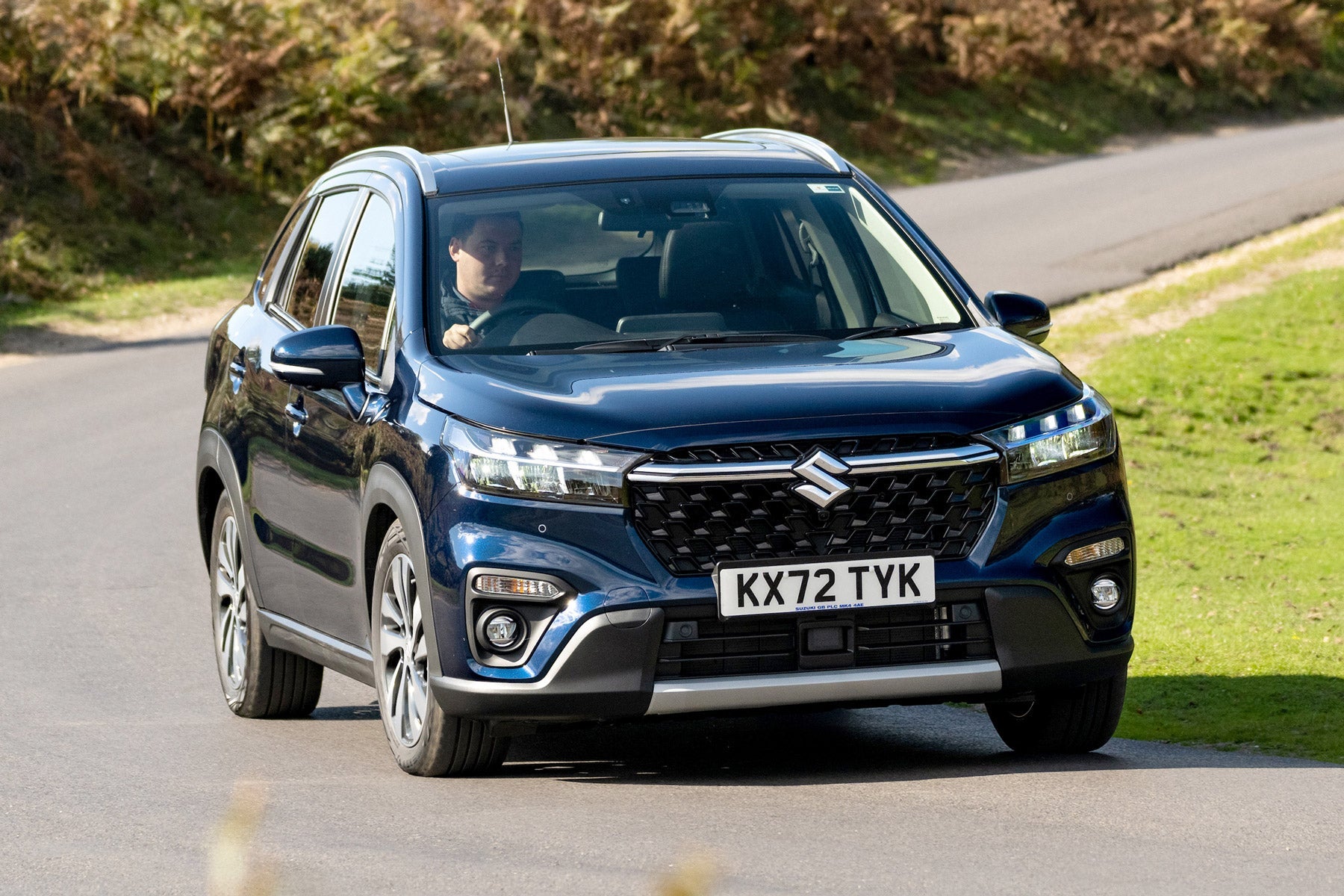Suzuki S-Cross Review 2025: Price, specs & boot space
Written by Andrew Brady
Quick overview
Pros
- Likely to be a very dependable used car
- Light weight benefits performance, handling and efficiency
- Well equipped for the money
Cons
- Rivals look and feel more upmarket
- Feels cramped compared with many family SUVs
- Short on refinement
Overall verdict on the Suzuki S-Cross
"The Suzuki S-Cross is a leftfield family SUV that'll appeal to buyers looking for value for money and long-term reliability. Buy one with Suzuki's Allgrip 4x4 system and you'll find it more than capable of crossing a muddy field, while Suzuki's excellent dealer network also adds to the appeal."
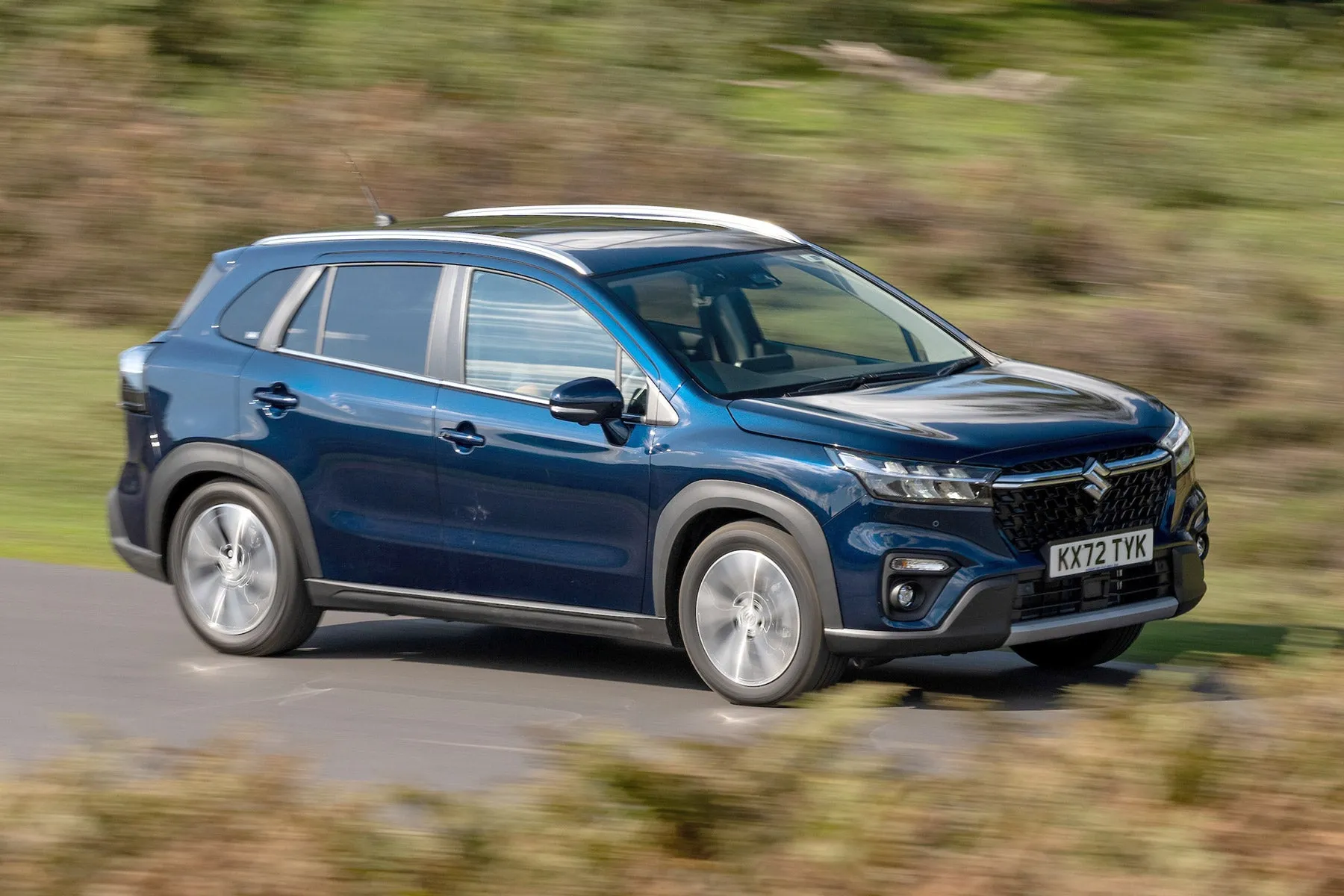
In many ways, the latest 2024 Suzuki S-Cross featured in this review isn't all that different from the previous Suzuki SX4 S-Cross. It looks a bit more conservative now - not necessarily a bad thing - while the cabin's been given a bit of a refresh. The biggest change, as we'll find out in this 2024 Suzuki S-Cross review, is under the bonnet, where you'll now find a 1.4-litre petrol engine with mild-hybrid electrical assistance, or the latest 1.5-litre 'full' hybrid system as introduced in the Suzuki Vitara.
The Suzuki S-Cross sits above the Vitara in the range, intending to rival cars like the Nissan Qashqai, Vauxhall Grandland, Hyundai Tucson, Kia Sportage and Skoda Karoq. It undercuts them all on price, especially when you consider the amount of standard equipment you get. But then again, it is slightly smaller than most of them, and feels quite a bit older.
There are just two trim levels available: Motion and Ultra. Standard equipment on the entry-level Suzuki S-Cross Motion includes a 7.0-inch media system (with Apple CarPlay and Android Auto smartphone mirroring), heated front seats and front/rear parking sensors. Above that sits the range-topping Suzuki S-Cross Ultra, which adds a 360-degree camera, leather seats, navigation and a panoramic sunroof.
The interior is hard-wearing rather than plush, but you do at least get the kind of high seating position that some rivals are surprisingly lacking. Space in the back isn't great for adults (especially with the panoramic roof), while boot space isn't all that competitive, either. It's probably the biggest indicator that this isn't a particularly new car underneath.
The driving experienced is a mixed bag also, again because it's feeling a bit old in places. That 1.4-litre mild-hybrid petrol engine is surprisingly perky and quite good fun, plus it's efficient, but it doesn't half get noisy when you start to rev it. Similarly, there's noticeably more wind- and road noise than in (admittedly more expensive) competitors such as the Nissan Qashqai.
Opting for the Suzuki S-Cross Ultra gives you the opportunity to add the brand's Allgrip selectable four-wheel drive system, while you'll need the full hybrid if you want an automatic gearbox. We reckon a 4x4 Suzuki S-Cross will appeal to those who live in rural areas: we've tried our hand at getting it stuck on a muddy off road course and, even on road-biased tyres, it took everything we could throw at it.
The full hybrid's automatic gearbox isn't quite so impressive. It's an automated manual transmission, rather than a conventional torque-converter auto or CVT, and it gets flummoxed fairly easily. Selecting sport mode sharpens up responses but knocks refinement, while there's an eco mode which - while improving fuel economy - hampers acceleration. It doesn't earn a place in our best hybrid cars, and for many we'd say the regular petrol is the best bet.
For an SUV that seems to prioritise things like safety, value for money and even off-road ability over sportiness, it's surprising how well the Suzuki S-Cross handles. In typical Japanese fashion, the overly-assisted steering is unnervingly light, while the suspension thumps over really poor road surfaces, but the car doesn't lean too much in the bends.
Looking for a used car for sale? We've got 100s of Suzuki Approved Used Cars for Sale for you to choose from, including a wide range of Suzuki S-Cross models for sale. If you're looking for the older version, you need our Suzuki SX4 S-Cross review.
Is the Suzuki S-Cross right for you?
If you're the kind of person who wants the very latest and flashiest products, and must put out the right image to show off to your neighbours, the Suzuki S-Cross probably won't be your bag. Similarly, it's not the most practical SUV out there, nor is it the most refined, or blessed with the best infotainment on the market.
However, there's a good portion of motorists that don't give a fig about image, technology or ultimate high-speed refinement. They just want something cheap to buy and run, well-equipped, safe and reliable, with enough space for shopping and the odd trip with friends. That's where the S-Cross holds appeal.
What's the best Suzuki S-Cross model/engine to choose?
There isn't a huge amount of choice in the Suzuki S-Cross line-up. If you want four-wheel drive, you'll need a top-spec S-Cross Ultra, while buyers seeking an automatic gearbox will need the hybrid.
We reckon the Suzuki S-Cross probably makes the most sense at the entry point to the range. The full-hybrid version probably isn't worth a price premium (unless you really want an auto), while the Suzuki S-Cross Motion covers all the essentials in terms of standard equipment.
What other cars are similar to the Suzuki S-Cross?
The Suzuki S-Cross is pitched against compact family SUVs like the Skoda Karoq, Nissan Qashqai, Kia Sportage and Vauxhall Grandland. If you don't need a huge amount of space, you might also want to consider small SUVs such as the Ford Puma, SEAT Arona and Toyota Yaris Cross.
Comfort and design: Suzuki S-Cross interior
"The interior of the Suzuki S-Cross feels very different to the Nissan Qashqai's fancy cabin. It's all a bit mid-2000s, with hard plastics and quite a lot of buttons."
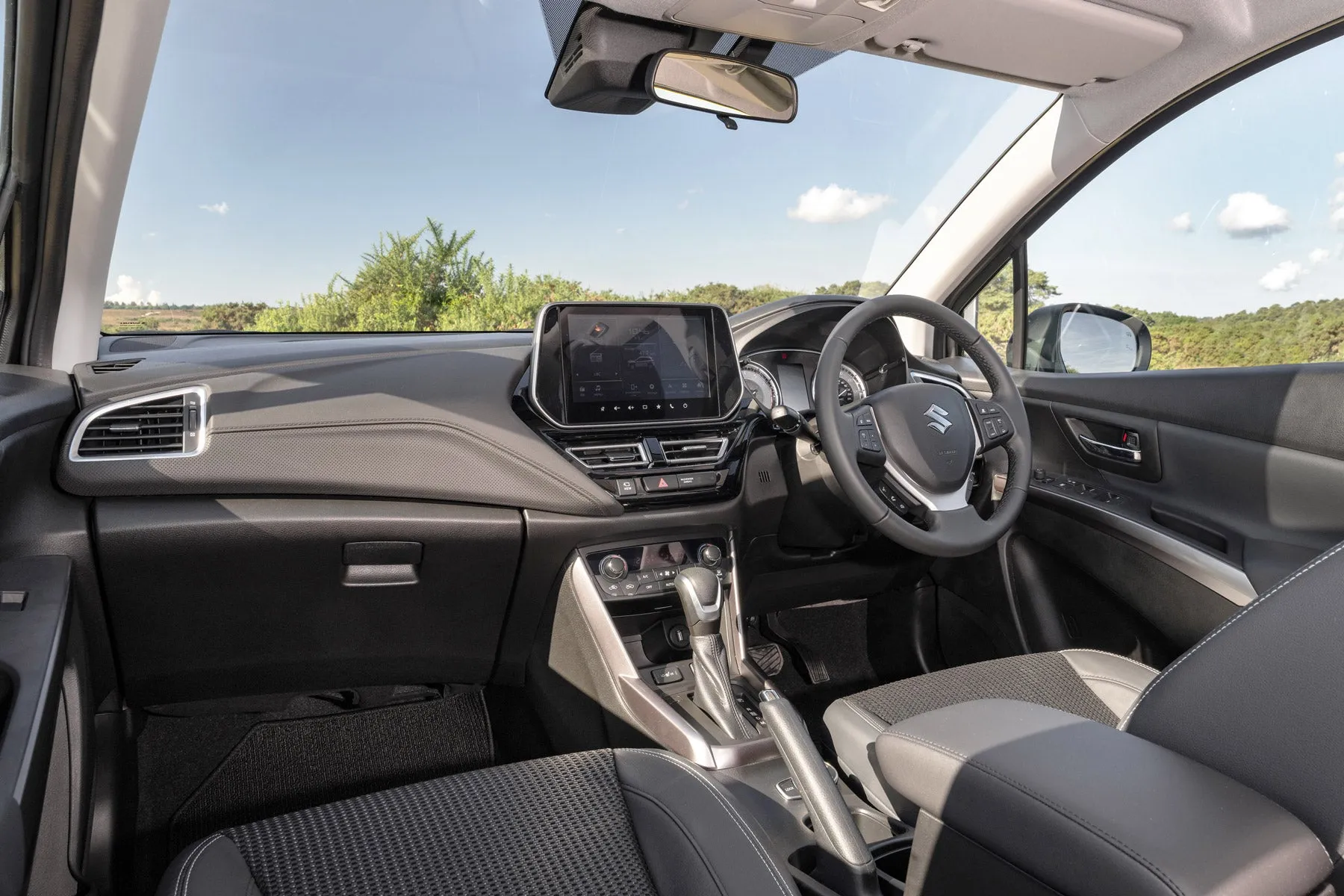
Step inside the Suzuki S-Cross and it'll quickly be evident why this is a cheaper car than a number of mid-size SUVs despite having more equipment. You'll also see why we question Suzuki's assertion that this S-Cross is 'all-new': it certainly doesn't look or feel it.
Funnily enough, the dashboard design is almost identical to that of the old SX4 S-Cross, which means a drab and rather dated design, a fair amount of hard plastics and very little design flair. You even get a manual handbrake lever: remember those? The S-Cross does get a new infotainment system mounted within the driver's line of sight, however.
Yes, it's not plush or upmarket in any way, but Suzuki interiors tend to stand the test of time and we have no reason to suspect the Suzuki S-Cross will be any different. What it lacks in opulence it makes up for in ruggedness: it gives the impression that your kids could do their worst and it will still come out pretty unscathed.
All the basics are well-sorted, too. The layout is straightforward, there's enough physical buttons for features, and there's a good level of adjustment in the seats and steering column. A big windscreen and slim pillars also means forward visibility is good, while the view out the back benefits from similarly slim pillars and a decent-sized back window.
You also get a decently high seating position in the front, something which some small-to-medium SUVs don't offer. The seats are relatively comfortable but not massively supportive, and there's no adjustable lumbar support.
Quality and finish
Here's where the Suzuki S-Cross shows both its age and price. Fundamentally, it feels fairly solid and nothing is flimsy, so we reckon your kids won't be able to pull it apart in a matter of hours. Ultra trim also brings leather-like dashboard trim and part-leather seats for a slight uptick in polish.
But when compared with the competition - even that from the small SUV sector - it looks pretty bland, has more hard plastic and the screens are quite low in resolution. The doors feel quite light and tinny when closed, too. It's less low-rent than a Dacia Duster, but there are certainly more lavishly-finished alternatives around.
Infotainment: Touchscreen, USB, nav and stereo in the Suzuki S-Cross
Entry-level Suzuki S-Cross models come equipped with a 7.0-inch touchscreen infotainment system with Bluetooth, DAB radio, Apple CarPlay and Android Auto. Annoyingly, we couldn't get the latter to connect to our Samsung phone, but we can't necessarily blame the car for that.
Upgrading to Ultra trim changes the screen size to nine inches, plus brings built-in sat-nav. Both screens have a broadly similar interface, however. They're bright and clear enough, but a bit laggy and slow to load menus at times, while the touch-sensitive shortcut buttons are a bit fiddly.
Nevertheless the sat-nav works quite well, and Ultra trim also brings a 360-degree camera system. A neat touch is that the camera system gives you a tour of the immediate exterior of the car on start-up, which is great if your neighbour's old deaf cat has a habit of sleeping behind the car.
There are a couple of USB connectors in the Suzuki S-Cross, but no USB-C to charge up the latest gadgets. The standard stereo isn't brilliant but it does a fairly decent job with your tunes, although there's no audio upgrade like in some rivals.
Space and practicality: Suzuki S-Cross boot space
The Suzuki S-Cross's exterior dimensions stand at 4300mm long, 1785mm wide and 1593mm tall. In non-shocking news, that's precisely the same length and width as the old SX4 S-Cross, but new roof rails add more height. Again, the assertion that this is an 'all-new car' doesn't really hold up to scrutiny...
The S-Cross's external size makes it a full 125mm shorter than a Nissan Qashqai, and slightly narrower and lower, too. It's longer than a VW T-Roc, though. The exterior space reflects what is a more compact offering in the class, and larger families with more stuff to carry are better off looking elsewhere.
We've no complaints with space up-front, with the panoramic roof on Ultra trim not impeding headroom and good storage including a centre armrest cubby. In the rear, however, things are not especially generous in terms of space.
A couple of kids or teenagers will be fine, but six-footers will find headroom quite limited (particularly with that panoramic roof fitted) because the seats are mounted higher than those in the front. Legroom isn't too bad, nor is shoulder room, but there are certainly more accommodating family SUVs out there. At least you do get reclining rear seat backs: not all rivals do.
The Suzuki S-Cross's boot capacity of 430 litres with the seats up is more than a typical hatchback, at least. It's also a good square shape, with a wide tailgate opening and an adjustable boot floor to make a flat load area with the seats folded. Hooks, a removable luggage cover and cubbies on either side also make it fairly practical, but the seats only fold in a simple 60/40 split and don't slide back and forth.
Handling and ride quality: What is the Suzuki S-Cross like to drive?
"The Suzuki S-Cross is a good deal lighter than a typical family SUV, which means it performs and drives rather well. You can also get it with four-wheel drive, which makes it genuinely capable in muddy or wintery conditions."
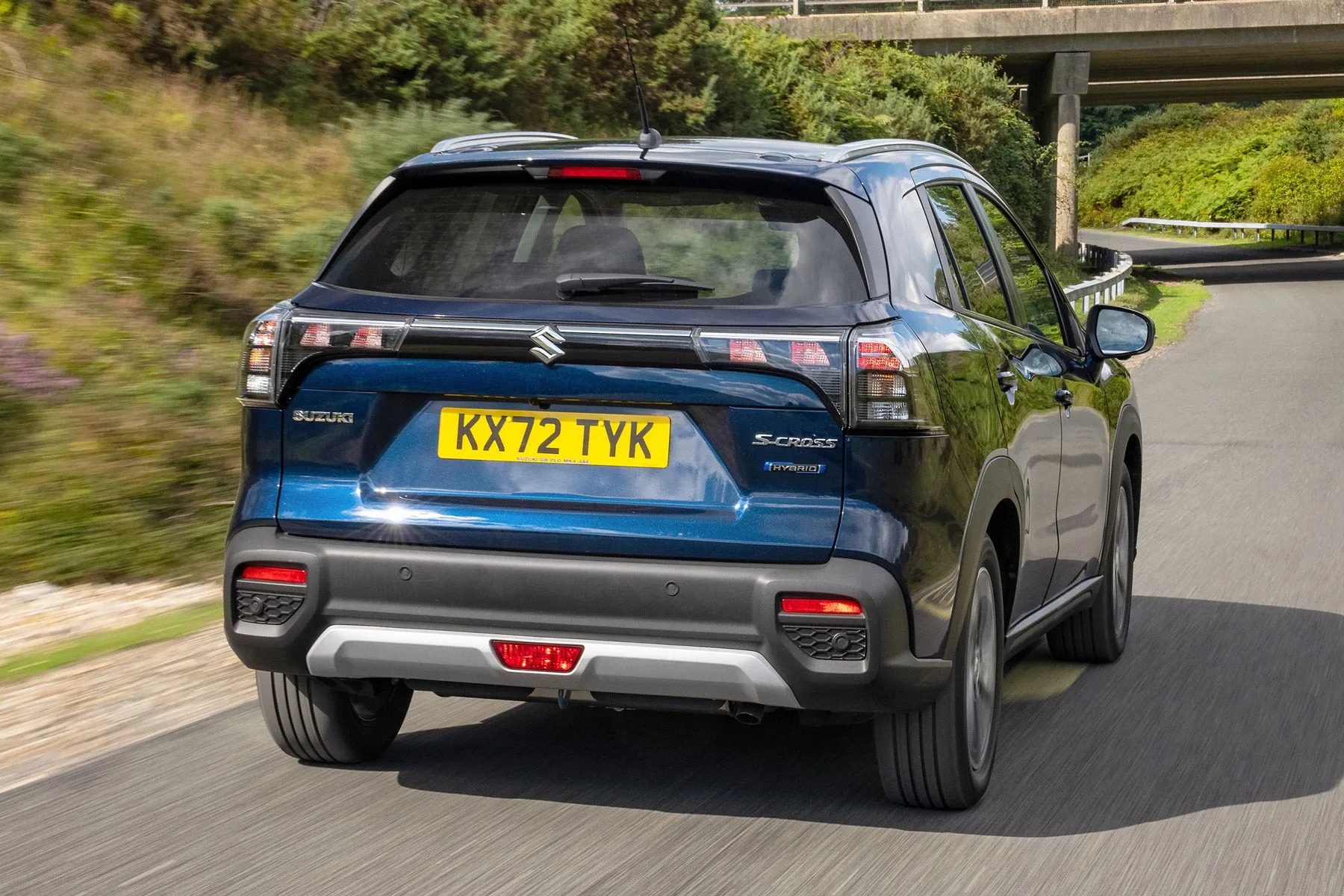
No matter which engine you choose, the Suzuki S-Cross Motion is a front-wheel-drive SUV, while the top-spec S-Cross Ultra can be specified with the brand's Allgrip selectable all-wheel-drive system.
Few family SUV buyers wish to take their car off road, but Suzuki does have form for making cars that keep going when conditions get a little challenging. If you live in a rural area, you might be reassured to know that we negotiated some pretty sticky mud in the S-Cross Ultra and - even on standard road tyres - it managed to keep moving.
While Suzuki's expertise in four-wheel drive keeps the wheels moving (the Suzuki Jimny is a favourite with off-roaders and farmers alike), we reckon the S-Cross's compact size and impressive lightness also helps here. It's a good 200-300kg lighter than a full-size family SUV and on a par with smaller models.
That also helps with its agility on the road. The light steering doesn't exactly inspire confidence out of town, but the car does remain composed in corners. Suzuki hasn't needed to fit overly stiff suspension, either, so while it isn't as soft as a Volkswagen T-Roc, it has a relatively compliant ride that smooths out all but the worst bumps and potholes.
As a town car it's really good, with that excellent visibility and modest size making it easy to thread it through tight gaps and park. A rear-view camera is standard on Motion models, while the Ultra comes with a 360-degree camera, which is very useful in tight parking situations.
What engines and gearboxes are available in the Suzuki S-Cross?
You can get the Suzuki S-Cross with two engines: a 1.4-litre Boosterjet petrol (with a small amount of mild-hybrid electrical assistance), or a 1.5-litre 'full hybrid' that was first introduced on the Suzuki Vitara.
The 1.4-litre engine was initially available with a six-speed manual or six-speed automatic gearbox, but the introduction of the hybrid late in 2022 saw the auto dropped from the mild-hybrid model. That's not necessarily a bad thing; the manual gearbox has a light clutch and a decent throw, so is easy enough to use.
With 129PS and 235Nm of torque, the entry-level Suzuki S-Cross engine is more than eager enough, especially when you consider the car's relatively light kerbweight. We'd actually say it feels quicker than its 9.5-second 0-62mph time suggests, with a real urgency in the mid-range. It does get a bit thrashy at high revs, but you won't need to take it there that often.
If you want a Suzuki S-Cross with an automatic gearbox, you'll now need a hybrid model. A word of warning about the gearbox, though: it's an automated manual transmission, which can be a bit erratic in its responses.
The hybrid setup works fine, although it doesn't feel as well polished as hybrid versions of rivals like the Hyundai Tucson and Kia Sportage. It's not fast, either - accelerating to 62mph in 12.7 seconds in front-wheel-drive Motion trim, or 13.5 seconds as a four-wheel-drive Ultra. That's considerably slower than the regular petrol model...
Refinement and noise levels
An older design and an engine that's been around for some years means the Suzuki S-Cross is not especially refined unless you're just pottering about town.
Keep the revs below the mid-range and the engine isn't intrusive, while there isn't too much vibration to worry about. But floor it to get up to speed on a motorway slip road or fast junction, and you'll get an almighty din from under the bonnet. That's especially true on Hybrid models with the easily confused automated manual gearbox.
Similarly, we'd like more sound insulation in the cabin because long motorway journeys aren't especially relaxing. Road noise is noticeable on all surfaces, and wind rustle disturbs the peace. Overcoming both means turning up the radio and risking a headache.
Safety equipment: How safe is the Suzuki S-Cross?
The latest Suzuki S-Cross hasn't been tested by crash safety body Euro NCAP. But let's be honest here, the structure underneath is taken from the old SX4 S-Cross (sorry Suzuki) which scored the maximum five-star rating back when it was tested way back in 2013.
We can't say for sure that it'll manage the same feat in 2022 because the testing is now more stringent, but the generous standard active safety kit tally includes adaptive cruise control, automatic emergency braking, blind spot monitoring, lane keeping assist and traffic sign recognition. Pricier competitors don't always offer that full roster as standard equipment.
MPG and fuel costs: What does a Suzuki S-Cross cost to run?
"Hybrid technology combined with a low kerb weight means the Suzuki S-Cross ought to be very efficient in the real world. Avoid four-wheel-drive models if efficiency is high on your wish-list, although even these aren't exactly thirsty."
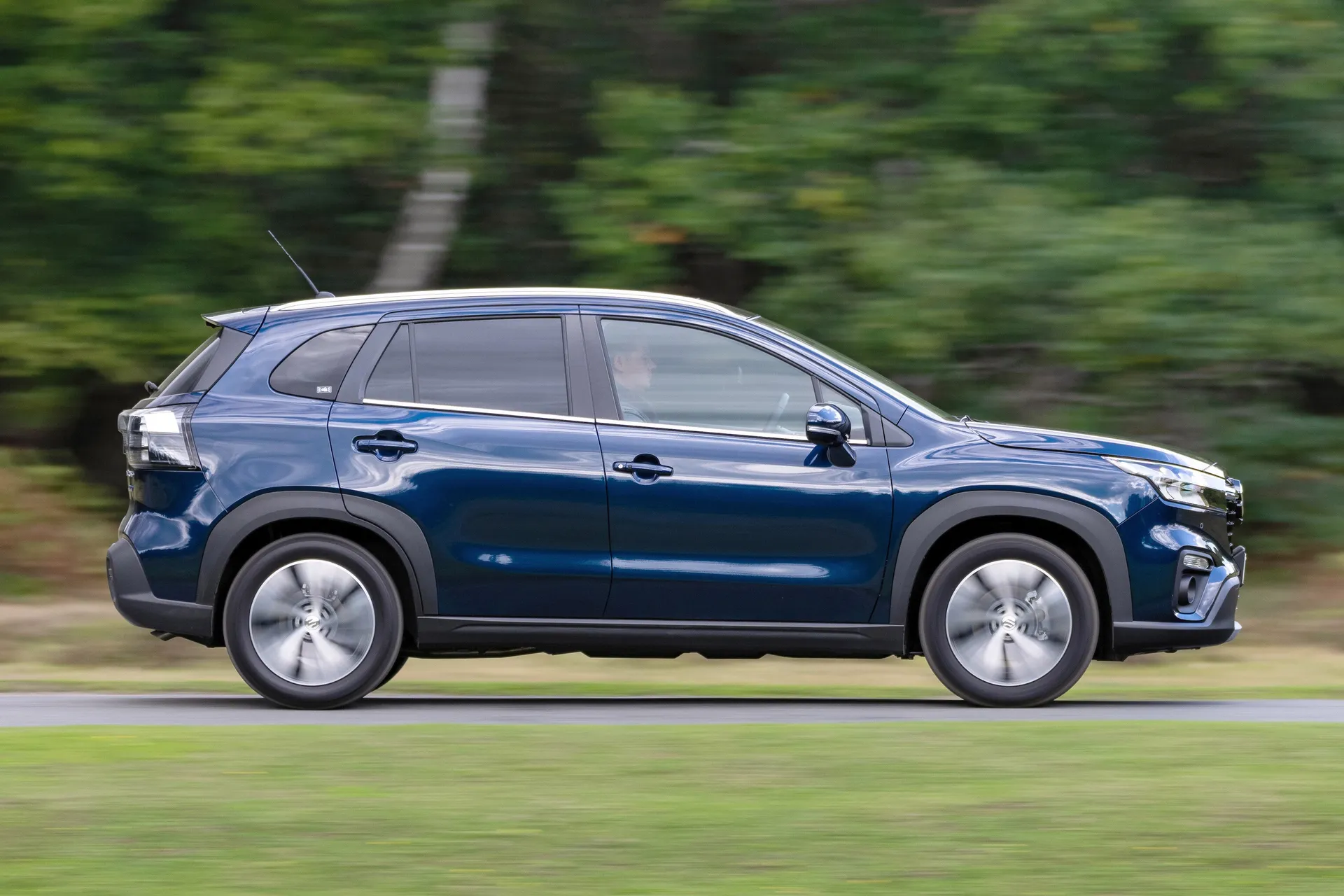
The most efficient Suzuki S-Cross is the full hybrid Motion model, officially capable of up to 54.3mpg in WLTP fuel economy tests. The mild-hybrid Motion, meanwhile, returns 53.2mpg with the manual gearbox, or 49.5mpg if you find an early example with the automatic transmission.
With Suzuki's Allgrip all-wheel-drive system, economy from the Suzuki S-Cross Hybrid Ultra drops to 48.7mpg, while the mild-hybrid returns 47.8mpg.
How reliable is a Suzuki S-Cross?
Suzuki finished in a mid-table position in the latest HonestJohn.co.uk Satisfaction Index, placing 17th out of the 29 brands included. However, when considered purely for reliability rather than general customer satisfaction, the brand rocketed up to second place. That should give owners plenty of confidence.
Suzuki is known for its engineering integrity, so while the plushness of the trim might not be all that, we can be pretty confident the money has been spent ensuring the mechanical bits are built to last. The 1.4-litre Boosterjet engine has done several years of service now, too, while we're yet to hear of any issues with the 1.5 hybrid.
Insurance groups and costs
Insurance groups for the Suzuki S-Cross start at group 21, rising to 24 for the all-wheel drive Ultra model. Those figures are on a par with key rivals and below some more expensive alternatives, so it's unlikely to break the bank when it comes to insurance.
VED car tax: What is the annual road tax on a Suzuki S-Cross?
All Suzuki S-Cross models are classed as 'alternative fuel' in the eyes of the government. No, not because they're a bit left-field, but because they're hybrids (be it mild or full). That means they qualify for a £10/year discount in VED road tax, so you'll pay £180 a year. If you're looking for an SUV with free road tax, you'll need to look at a fully-electric alternative like the MG ZS EV.
How much should you be paying for a used Suzuki S-Cross?
"The Suzuki S-Cross is priced from £26,699 which isn't the bargain basement entry-level price tag you might expect. You do get lots for your money, though, including 17-inch alloy wheels, heated seats and parking sensors as standard."
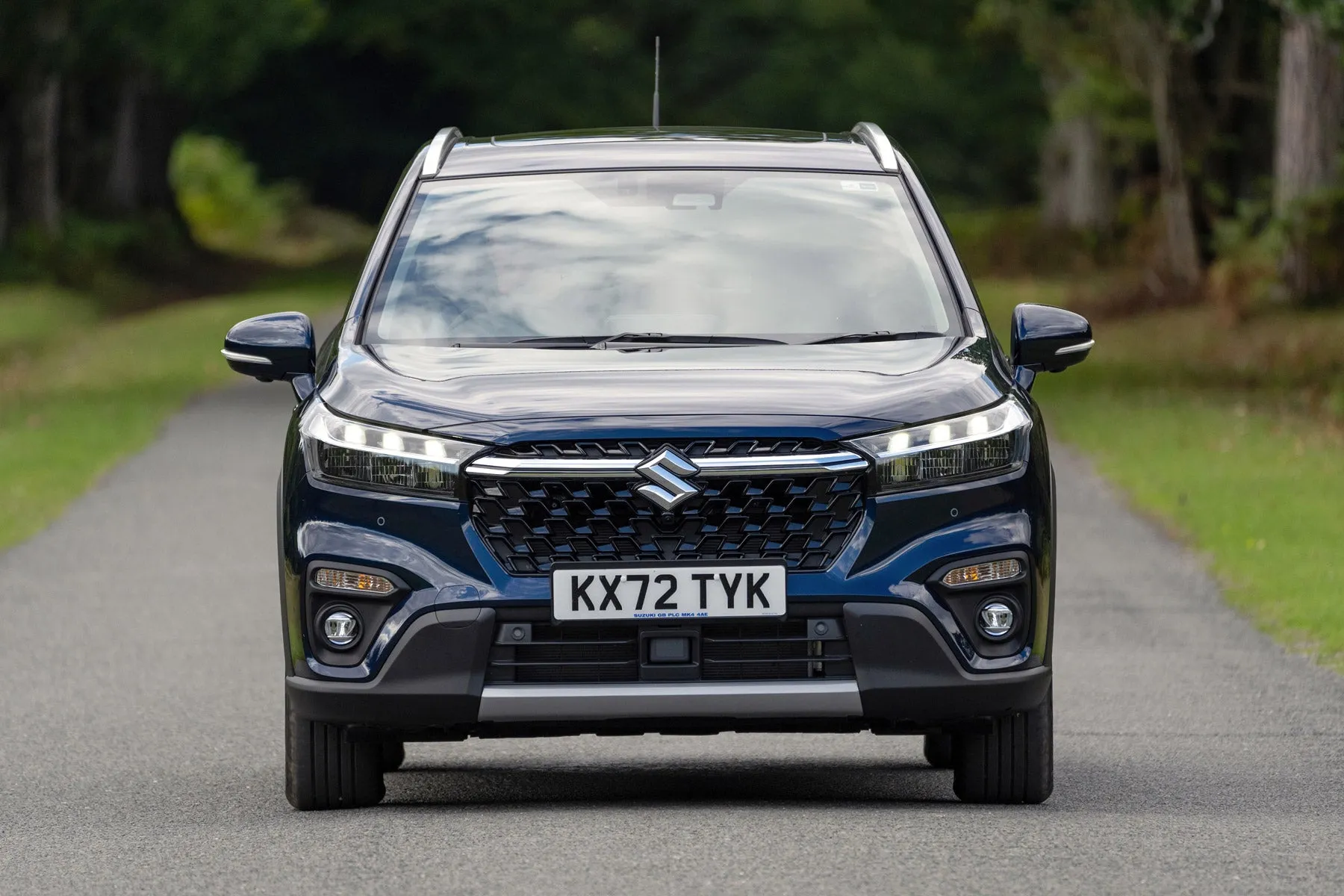
Top-spec Suzuki S-Cross Ultra models start at around £30,000 with mild-hybrid power, while the range tops out with the £31,500 Ultra Full Hybrid.
Buying used can save you a very handy amount compared to buying brand new, though, plus you'll also be able to dodge the waiting lists and have your car straight away. A quick look at the heycar classifieds reveal that around £16,000 or £17,000 is enough to get you into an entry-level example from 2023 with around 15,000 miles on the clock. For a £10,000 saving, we'd take that all day long.
Trim levels and standard equipment
The most affordable Suzuki S-Cross Motion features 17-inch alloy wheels, LED headlights, heated front seats, parking sensors front and rear, plus Android Auto and Apple CarPlay smartphone connectivity. There's also adaptive cruise control, automatic emergency braking, blind spot monitoring and traffic sign recognition.
Stepping up to the Suzuki S-Cross Ultra brings a polished finished to the alloy wheels along with part-leather seats, sat-nav, a panoramic sunroof and a 360-degree parking camera.
Ask the heycar experts: common questions
Is the Suzuki S-Cross a reliable car?
What's bigger: a Suzuki S-Cross or Vitara?
Is the Suzuki S-Cross better than a Nissan Qashqai?
Get our latest advice, news and offers
Keep me updated by email with the latest advice, news and offers from heycar.
By submitting you agree to our privacy policy
